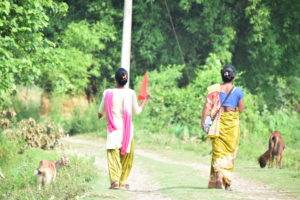The solution
We can predict most hazards in good time and provide vulnerable communities with the right information, in the right way, and at the right time to prevent disaster.
It’s not just about technology — it’s about inclusion, equity, and listening to the voices that are too often ignored. With a blend of low-tech, high-tech, and no-tech solutions to make early warning available to all, we can save thousands of lives by enabling timely evacuations and strengthening resilience.
At Practical Action we have decades of experience in implementing EWS that save lives and protect livelihoods. Success requires diverse expertise: scientific knowledge, community mobilization, and effective governance. No single organization can provide all these skills, which is why we have proven the power of inclusive partnerships.
Together, we can create a scalable toolkit for inclusive EWS that can be adapted to any context and hazard. This strategy will empower communities all around the world, ensuring that no one is left behind in the face of climate-induced disasters.






